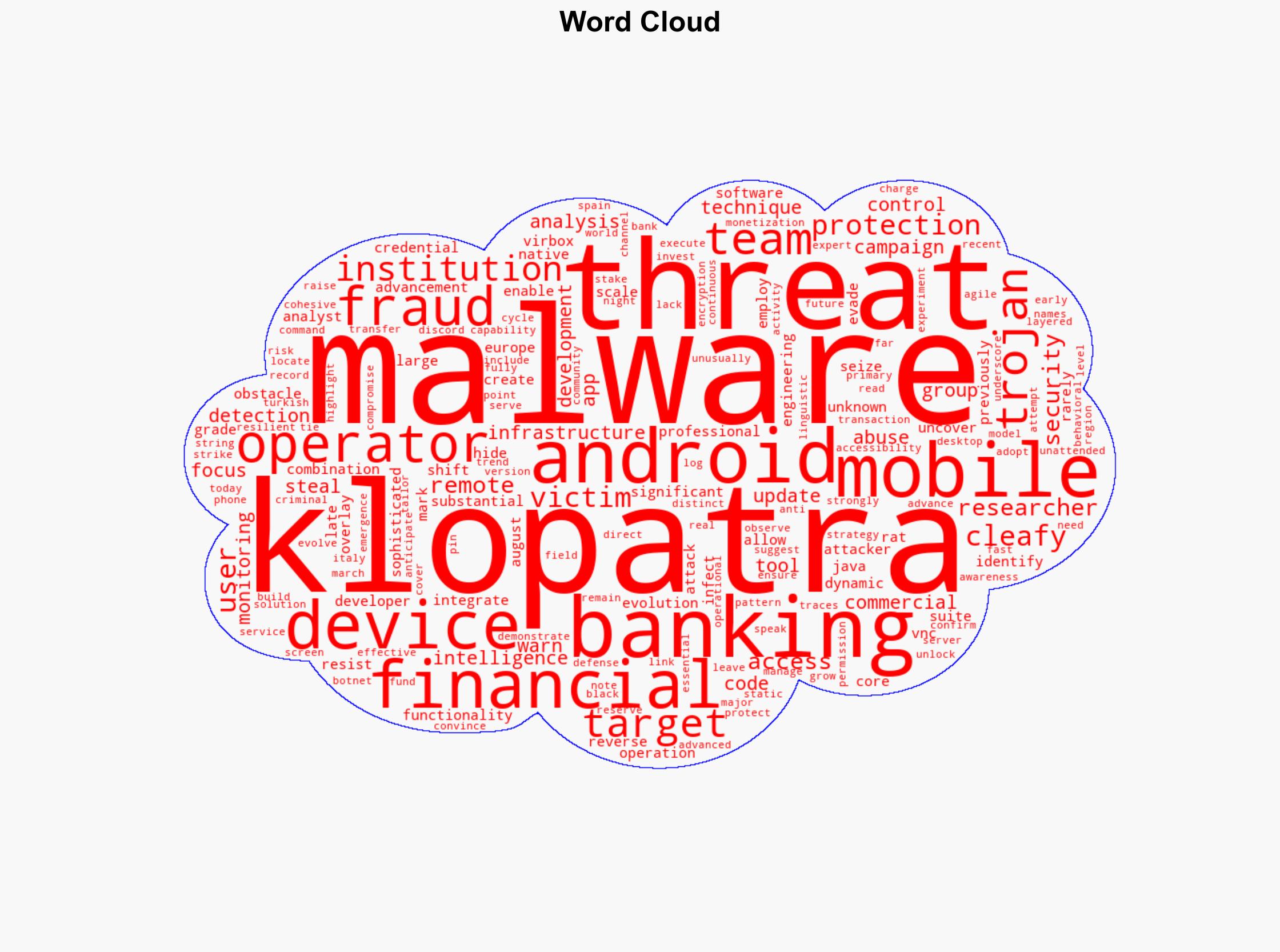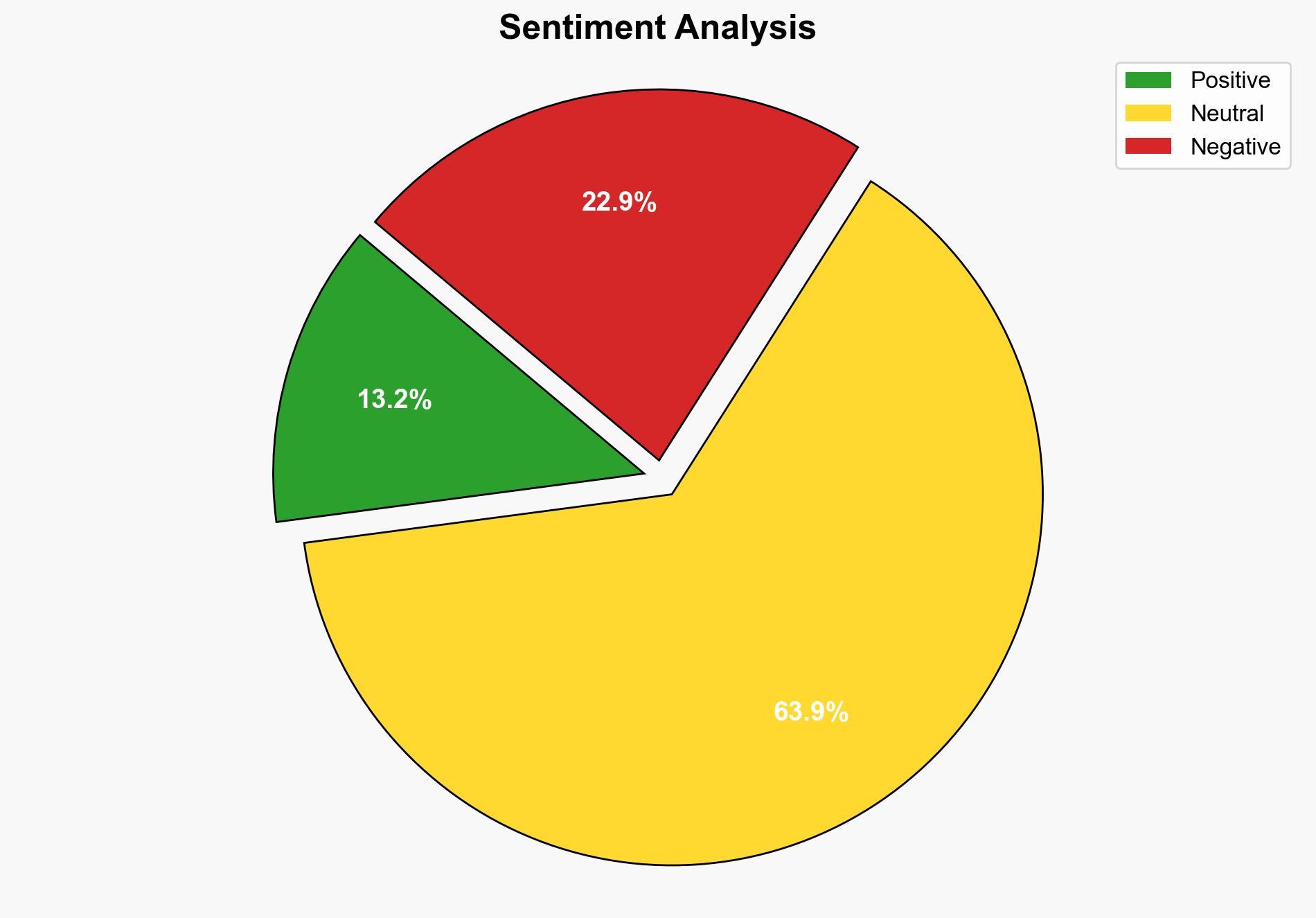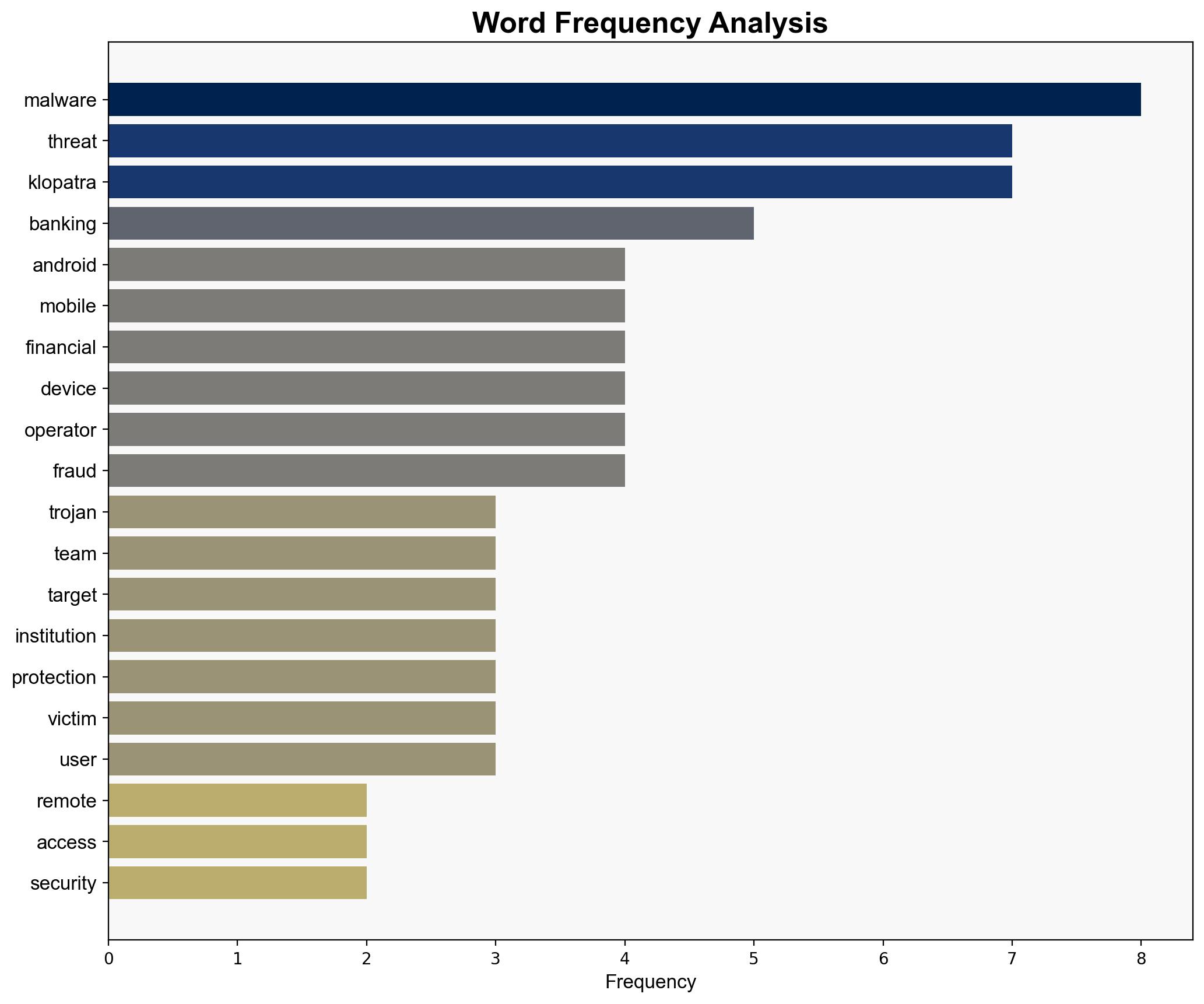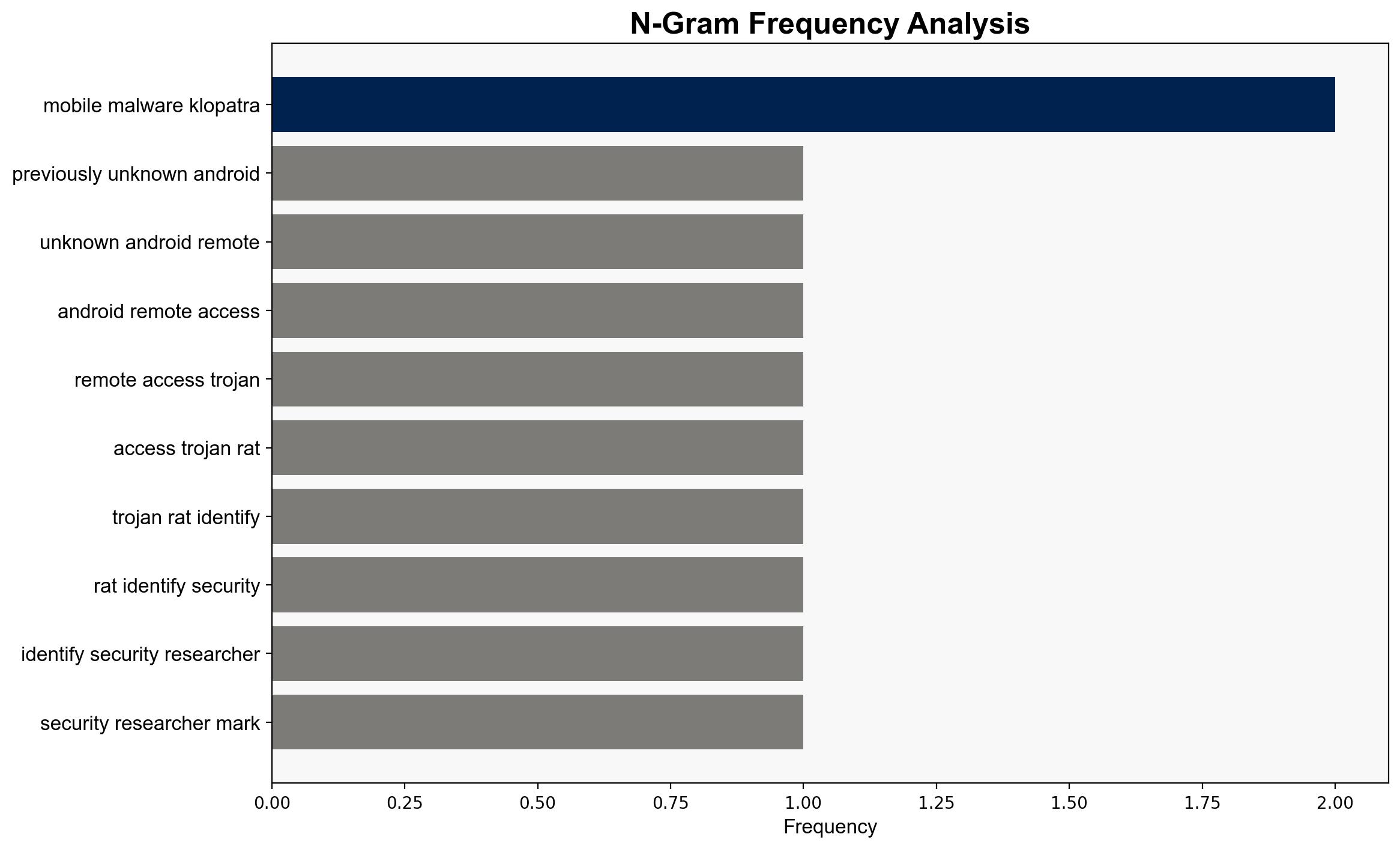New Android RAT Klopatra Targets Financial Data – Infosecurity Magazine
Published on: 2025-09-30
Intelligence Report: New Android RAT Klopatra Targets Financial Data – Infosecurity Magazine
1. BLUF (Bottom Line Up Front)
The emergence of the Klopatra Android RAT represents a significant evolution in mobile banking threats, characterized by advanced evasion techniques and rapid development cycles. The most supported hypothesis is that a Turkish-speaking criminal group is behind this malware, targeting financial institutions in Europe with a high degree of sophistication. Confidence Level: Moderate. Recommended action includes enhancing behavioral monitoring and threat intelligence sharing among financial institutions to anticipate and mitigate the evolving threat.
2. Competing Hypotheses
Hypothesis 1: Klopatra is developed and operated by a Turkish-speaking criminal group targeting European financial institutions to execute financial fraud.
– **Supporting Evidence:** Linguistic traces in the malware’s code, the focus on financial fraud, and the targeted regions (Spain and Italy) suggest a cohesive, organized group with specific regional interests.
Hypothesis 2: Klopatra is a product of a broader, possibly multinational cybercriminal collaboration aiming to test and refine advanced mobile malware techniques.
– **Supporting Evidence:** The use of commercial-grade protection tools and rapid development cycles could indicate a larger, well-funded operation beyond a single linguistic or national group.
Using ACH 2.0, Hypothesis 1 is better supported due to direct linguistic and operational evidence linking the malware to a Turkish-speaking group. However, the sophistication of the malware suggests potential collaboration or influence from broader cybercriminal networks.
3. Key Assumptions and Red Flags
– **Assumptions:** The linguistic traces are a reliable indicator of the operators’ origin. The focus on European financial institutions implies a regional targeting strategy.
– **Red Flags:** The rapid development and sophisticated protection techniques could mask the involvement of state-sponsored actors or larger criminal syndicates.
– **Blind Spots:** Lack of direct attribution to specific individuals or entities within the Turkish-speaking group. Potential for misdirection through false linguistic traces.
4. Implications and Strategic Risks
The Klopatra malware exemplifies the growing trend of mobile threats adopting techniques traditionally reserved for desktop environments, increasing the threat landscape for financial institutions. This evolution poses significant economic risks due to potential large-scale financial fraud. The agility and sophistication of the malware could inspire similar developments in other regions, escalating the global cyber threat environment.
5. Recommendations and Outlook
- Enhance device-level behavioral monitoring and integrate advanced threat detection solutions to identify and mitigate Klopatra-like threats.
- Facilitate information sharing and collaboration among financial institutions and cybersecurity entities to strengthen collective defense mechanisms.
- Scenario-based Projections:
- Best Case: Rapid identification and neutralization of the Klopatra operators, minimizing financial impact.
- Worst Case: Widespread adoption of Klopatra techniques by other cybercriminal groups, leading to a surge in mobile banking fraud.
- Most Likely: Continued evolution and adaptation of Klopatra, requiring ongoing vigilance and adaptive security measures.
6. Key Individuals and Entities
No specific individuals are identified. The focus is on a Turkish-speaking criminal group and the Klopatra malware itself.
7. Thematic Tags
national security threats, cybersecurity, financial fraud, mobile malware, regional focus





